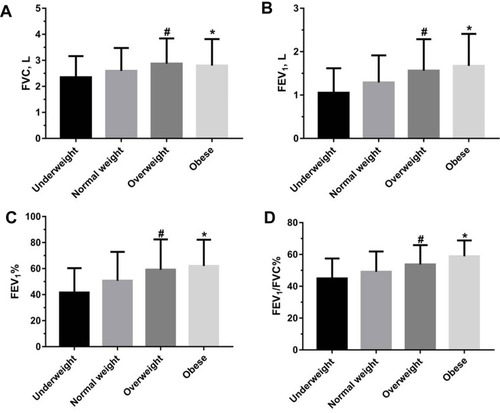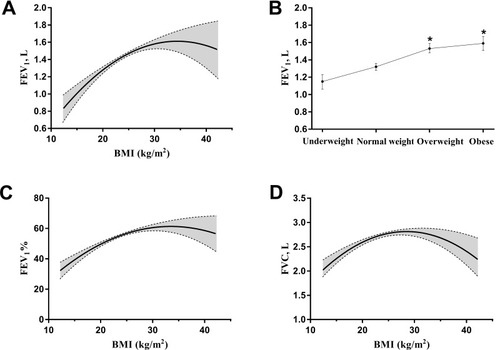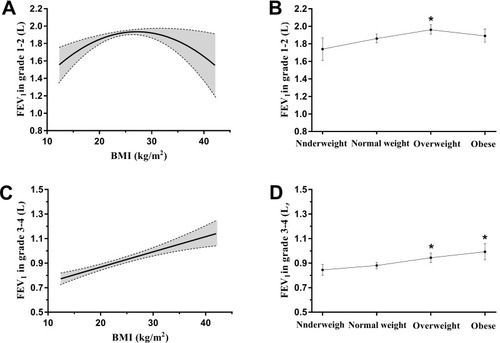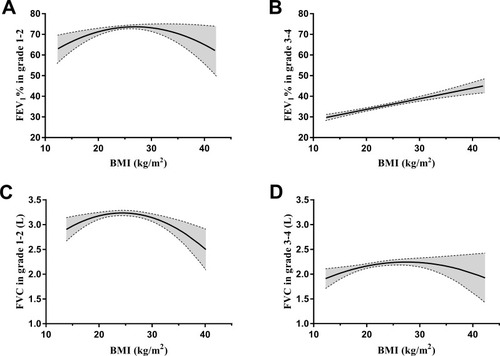Figures & data
Table 1 Baseline Characteristics of COPD Patients with Different BMIs (n=1644)
Figure 1 The differences in FVC, FEV1, FEV1% and FEV1/FVC% of the four groups of patients with COPD (A–D). Statistical analysis was performed using one-way ANOVA test. The data were represented as mean values ±SD. #p<0.05 indicating the statistical difference between overweight group with COPD and underweight or normal weight group. *p<0.05 indicating the statistical difference between obese group with COPD and underweight or normal weight group.

Figure 2 The effect of BMI on lung function in the patients with COPD. Statistical analysis was performed using multiple linear regression analysis. (A and B) BMI used as the quantitative and qualitative variable to assess the relation between BMI and FEV1. (C and D) BMI used as the quantitative variable to assess the relation between BMI and FEV1% or FVC. *p<0.05 vs normal weight group.

Figure 3 The effect of BMI on FEV1 in GOLD grade of COPD patients. Statistical analysis was performed using multiple linear regression analysis. (A and B) BMI used as the quantitative and qualitative variable to assess the relation of BMI and FEV1 in GOLD 1–2 grade. (C and D) BMI used as the quantitative and qualitative variable to assess the relation between BMI and FEV1 in GOLD 3–4 grade. *p<0.05 indicating the significant difference compared to normal weight group.

Figure 4 The effect of BMI on FEV1% and FVC in GOLD grade of COPD patients. Statistical analysis was performed using multiple linear regression analysis. The curve and the 95% CI area were obtained from the regression equation by fixing each covariate at a certain level. (A and B) BMI used as the quantitative variable to assess the relation of BMI and FEV1% in GOLD 1–2 grade and GOLD 3–4 grade. (C and D) BMI used as the quantitative variable to assess the relation between BMI and FVC in GOLD 1–2 grade and GOLD 3–4 grade.

